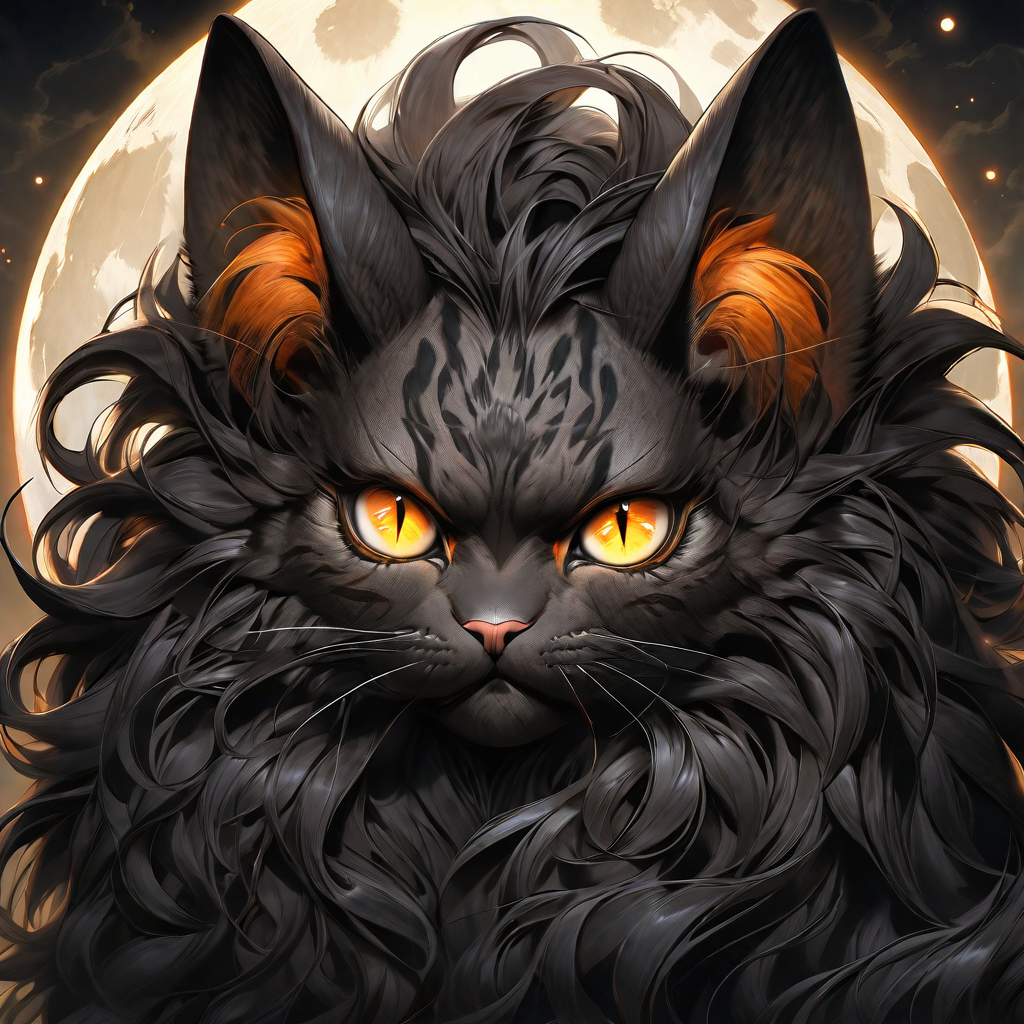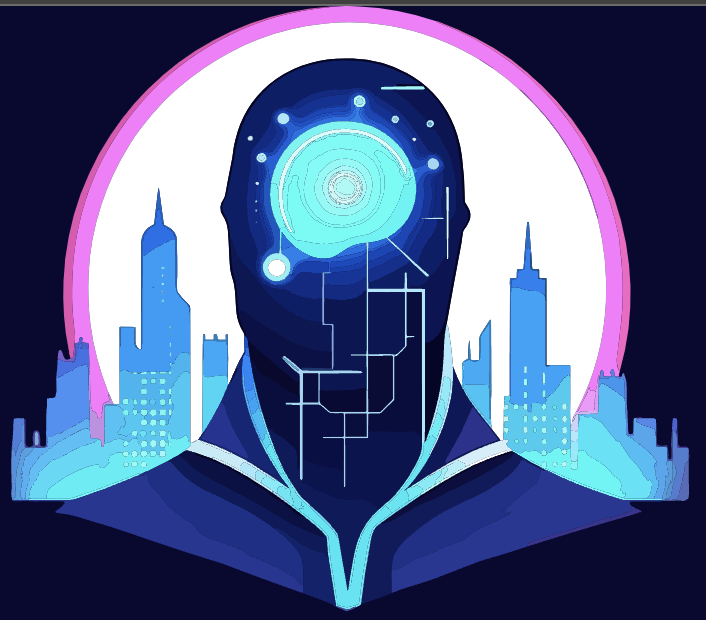anima_pencil-xl
Maintainer: charlesmccarthy

1

| Property | Value |
|---|---|
| Run this model | Run on Replicate |
| API spec | View on Replicate |
| Github link | No Github link provided |
| Paper link | No paper link provided |
Create account to get full access
Model overview
The anima_pencil-xl model is a powerful text-to-image generation model that combines the capabilities of blue_pencil-XL and ANIMAGINE XL 3.0 / ANIMAGINE XL 3.1, two of the top-ranked models on Civitai. Developed by charlesmccarthy, this model is capable of generating high-quality, detailed anime-style images from text prompts.
Model inputs and outputs
The anima_pencil-xl model takes a variety of inputs, including the prompt, seed, steps, CFG scale, and scheduler. Users can also specify the width, height, and batch size of the generated images. The model outputs an array of image URLs.
Inputs
- vae: The Variational AutoEncoder (VAE) to use, with the default set to
sdxl-vae-fp16-fix. - seed: The seed used when generating, set to -1 for a random seed.
- model: The model to use, with the default set to
Anima_Pencil-XL-v4.safetensors. - steps: The number of steps to use when generating, with a default of 35 and a range of 1 to 100.
- width: The width of the generated image, with a default of 1184 and a range of 1 to 2048.
- height: The height of the generated image, with a default of 864 and a range of 1 to 2048.
- prompt: The text prompt used to generate the image.
- cfg_scale: The Classifier-Free Guidance (CFG) scale, which defines how much attention the model pays to the prompt, with a default of 7 and a range of 1 to 30.
- scheduler: The scheduler to use, with the default set to
DPM++ 2M SDE Karras. - batch_size: The number of images to generate, with a default of 1 and a range of 1 to 4.
- negative_prompt: The negative prompt, which specifies things the model should avoid generating.
- guidance_rescale: The amount to rescale the CFG-generated noise to avoid generating overexposed images, with a default of 0.7 and a range of 0 to 1.
Outputs
- An array of image URLs representing the generated images.
Capabilities
The anima_pencil-xl model is capable of generating high-quality, detailed anime-style images from text prompts. It can create a wide variety of scenes and characters, from whimsical fantasy landscapes to realistic portraits. The model's ability to combine the strengths of blue_pencil-XL and ANIMAGINE XL 3.0 / ANIMAGINE XL 3.1 makes it a powerful tool for artists, illustrators, and creative professionals.
What can I use it for?
The anima_pencil-xl model can be used for a variety of applications, such as generating concept art for games or animations, creating custom illustrations for websites or social media, or producing unique images for various marketing and advertising purposes. The model's versatility and high-quality output make it a valuable asset for businesses and individuals looking to create compelling, visually striking content.
Things to try
One interesting aspect of the anima_pencil-xl model is its ability to generate diverse and unexpected images based on the input prompt. Users can experiment with different prompts, including specific details about characters, settings, and styles, to see how the model responds and what types of images it generates. Additionally, exploring the various input parameters, such as the CFG scale and scheduler, can help users fine-tune the model's output to better suit their needs and preferences.
This summary was produced with help from an AI and may contain inaccuracies - check out the links to read the original source documents!
Related Models

animagine-xl

7
animagine-xl is an advanced latent text-to-image diffusion model designed to create high-resolution, detailed anime images. It was created by Replicate and is an evolution of the original animagine-xl model. Similar anime-themed text-to-image models include animagine-xl-3.1, animate-lcm, openroleplay.ai-animagine-v3, and cog-a1111-ui. Model inputs and outputs animagine-xl takes a text prompt, an optional input image, and a set of parameters to control the output. The model then generates high-quality anime-style images based on the provided input. Outputs are returned as image URLs. Inputs Prompt**: The text prompt describing the desired image Negative Prompt**: Text to avoid in the generated image Image**: An optional input image for img2img or inpaint mode Mask**: An optional input mask for inpaint mode Width/Height**: The desired output image dimensions Num Outputs**: The number of images to generate Scheduler**: The algorithm used to generate the images Guidance Scale**: The scale for classifier-free guidance Prompt Strength**: The strength of the prompt when using img2img or inpaint Num Inference Steps**: The number of denoising steps Apply Watermark**: Whether to apply a watermark to the generated images Disable Safety Checker**: Whether to disable the safety checker Outputs Image URLs**: One or more URLs of the generated anime-style images Capabilities animagine-xl can generate high-quality, detailed anime-style images from text prompts. It excels at creating character designs, scenes, and illustrations in the anime aesthetic. The model can also perform image-to-image tasks like inpainting and can be fine-tuned for specific anime styles or genres. What can I use it for? animagine-xl is well-suited for creating anime-themed artwork, character designs, and illustrations for a variety of applications such as games, movies, comics, and merchandise. It can be used by artists, designers, and hobbyists to quickly generate anime-inspired images to use as starting points or inspiration for their own work. The model can also be fine-tuned on specific datasets to create custom anime styles. Things to try Some interesting things to try with animagine-xl include experimenting with different prompts and prompt engineering techniques to create unique and specific anime-style images, using the inpainting and img2img capabilities to modify existing images, and exploring the model's ability to generate character designs and illustrations in different anime genres and art styles.
Updated Invalid Date

animagine-xl-3.1

363
The animagine-xl-3.1 is an anime-themed text-to-image stable diffusion model created by cjwbw. It is similar to other text-to-image models like kandinsky-2.2 and reliberate-v3, but with a specific focus on generating anime-style imagery. Model inputs and outputs The animagine-xl-3.1 model takes in a variety of inputs to generate anime-themed images: Inputs Prompt**: A text description of the desired image Seed**: A random seed value to control the image generation Width/Height**: The dimensions of the output image Guidance Scale**: A parameter to control the influence of the text prompt Style Selector**: A preset to control the overall style of the image Negative Prompt**: A text description of things to avoid in the output image Outputs Output Image**: A generated image in URI format that matches the provided prompt and input parameters Capabilities The animagine-xl-3.1 model is capable of generating diverse anime-themed images based on text prompts. It can produce high-quality illustrations of characters, scenes, and environments in an anime art style. What can I use it for? The animagine-xl-3.1 model could be useful for a variety of applications, such as: Generating concept art or illustrations for anime-inspired projects Creating custom avatars or profile pictures with an anime aesthetic Experimenting with different anime-themed image styles and compositions Things to try Some interesting things to try with the animagine-xl-3.1 model include: Exploring the impact of different style presets on the generated images Combining the model with other tools like gfpgan for face restoration or voicecraft for text-to-speech Experimenting with the model's ability to generate images of specific anime characters or settings
Updated Invalid Date

pony-sdxl

28
The pony-sdxl model is a text-to-image generation model developed by charlesmccarthy. It is based on the Pony Realism style, producing anime-inspired images of ponies and other fantastical creatures. The model is built on top of the SDXL architecture, which is a powerful text-to-image diffusion model capable of generating high-quality, detailed images. While similar to other SDXL-based models like sdxl-lightning-4step and animagine-xl, the pony-sdxl model has been fine-tuned to specialize in pony-themed imagery. Model inputs and outputs The pony-sdxl model takes in a variety of inputs that allow for fine-tuned control over the generated images. These include the prompt text, which describes the desired image, as well as parameters like the resolution, number of steps, and CFG scale. The model outputs a set of image URLs that can be used to retrieve the generated images. Inputs Prompt**: The text prompt that describes the desired image Negative Prompt**: Additional text to guide the model away from generating certain elements Seed**: The random seed used to generate the image Steps**: The number of steps the model takes to generate the image Width/Height**: The resolution of the generated image CFG Scale**: A parameter that controls how much the model focuses on the prompt Scheduler**: The algorithm used to generate the image Batch Size**: The number of images to generate at once Outputs Image URLs**: A set of URLs pointing to the generated images Capabilities The pony-sdxl model is capable of generating high-quality, detailed images of fantastical pony-themed scenes. It can produce a wide range of pony designs, from realistic to more stylized and exaggerated. The model is particularly adept at capturing the whimsical and magical qualities of pony characters and their environments. What can I use it for? The pony-sdxl model could be used to create illustrations, concept art, or even assets for pony-themed games, animations, or other creative projects. Its ability to generate unique and imaginative pony imagery could make it a valuable tool for artists, designers, and content creators working in the fantasy or anime genres. Additionally, the model's flexibility and customization options allow users to explore a variety of pony-inspired ideas and styles. Things to try One interesting aspect of the pony-sdxl model is its ability to blend different styles and influences. By experimenting with the prompt and other input parameters, users can create pony characters and scenes that combine realistic, fantastical, and even surreal elements. This could lead to the generation of truly unique and unexpected pony imagery that pushes the boundaries of the genre.
Updated Invalid Date

blend-images

74
blend-images is a high-quality image blending model developed by charlesmccarthy using the Kandinsky 2.2 blending pipeline. It is similar to other text-to-image models like kandinsky-2.2, kandinsky-2, and animagine-xl, which are also created by the FullJourney.AI team. However, blend-images is specifically focused on blending two input images based on a user prompt. Model inputs and outputs The blend-images model takes three inputs: two images and a user prompt. The output is a single blended image that combines the two input images according to the prompt. Inputs image1**: The first input image image2**: The second input image prompt**: A text prompt that describes how the two images should be blended Outputs Output**: The blended output image Capabilities blend-images can create high-quality image blends by combining two input images in creative and visually striking ways. It uses the Kandinsky 2.2 blending pipeline to generate the output, which results in natural-looking and harmonious compositions. What can I use it for? The blend-images model could be used for a variety of creative and artistic applications, such as: Generating photomontages or collages Combining multiple images into a single, cohesive visual Exploring surreal or dreamlike image compositions Creating unique visual assets for graphic design, advertising, or media productions By providing two input images and a descriptive prompt, you can use blend-images to produce compelling and visually striking blended images. Things to try Some ideas to experiment with blend-images include: Blending landscape and portrait images to create a hybrid composition Combining abstract and realistic elements to generate a surreal visual Exploring different prompts to see how they affect the blending process and output Using the model to create visuals for a specific narrative or creative concept The flexibility of blend-images allows for a wide range of creative possibilities, so don't be afraid to try different combinations of inputs and prompts to see what unique and compelling results you can achieve.
Updated Invalid Date